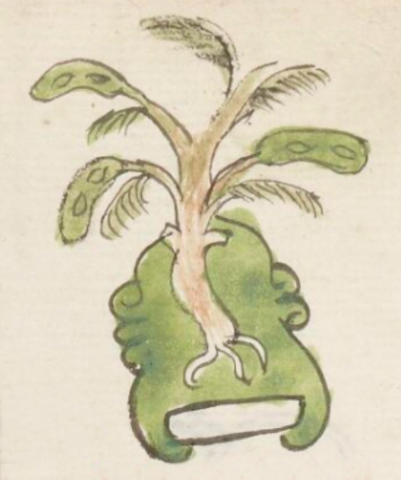Huixachtitlan (TR28r)
This compound glyph for the place name Huixachtitlan features a tropical tree of the acacia or mimosa family, called the huixachin. It has eight visible fronds, five lacy and three more substantial. They are painted green. The trunk is a tan color. It has two small stumps (seemingly from branches that have been cut off) on either side of the trunk about half way up from the white, exposed roots. The tree is in front of an upright, bell-shaped, green hill or mountain (tepetl) which serves as a semantic (not phonetic) locative (-tepec, on or at the hill of). The hill or mountain has the usual curving rocky outcroppings on its slopes and a horizontal white band at its base.
Stephanie Wood
vixatitan
Huixachtitlan
Stephanie Wood
ca. 1550–1563
Jeff Haskett-Wood
trees, árboles, nombres de lugares

huixach(in), tropical tree, https://nahuatl.wired-humanities.org/content/huixachin
-titlan (locative suffix), next to, https://nahuatl.wired-humanities.org/content/titlan
Telleriano-Remensis Codex, folio 28 recto, MS Mexicain 385, Gallica digital collection, https://gallica.bnf.fr/ark:/12148/btv1b8458267s/f81.item.zoom
The non-commercial reuse of images from the Bibliothèque nationale de France is free as long as the user is in compliance with the legislation in force and provides the citation: “Source gallica.bnf.fr / Bibliothèque nationale de France” or “Source gallica.bnf.fr / BnF.”


